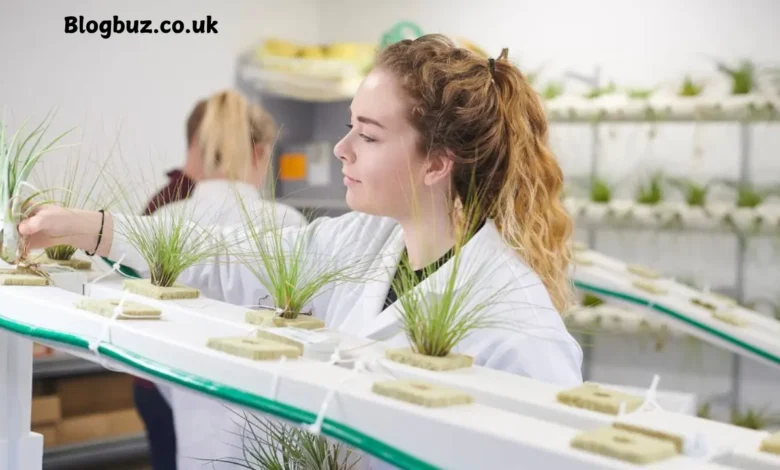Arugula Researcher at Cambridge: A Deep Dive into Rocket Science

When you think of Cambridge, visions of ancient colleges, historic quads, and Nobel laureates might spring to mind. Yet beyond the storied halls and cloisters, cutting-edge botanical research thrives—particularly around a peppery little leafy green you may know as arugula (also called rocket). In this comprehensive guide, we explore the work of the arugula researcher at Cambridge, uncovering how Cambridge scientists are decoding the secrets of Eruca sativa to advance agriculture, nutrition, and sustainability.
Why Cambridge for Arugula Research?
Cambridge University boasts world-class facilities—from the Department of Plant Sciences to the Cambridge University Botanic Garden—making it a natural home for research into Eruca sativa. The arugula researcher at Cambridge leverages:
- Rich Botanical Collections: Living accessions of Eruca sativa in the Botanic Garden’s collection provide living material for trait analysis.
- Genomics Infrastructure: High-throughput sequencing platforms decode arugula’s genome, enabling marker-assisted breeding.
- Interdisciplinary Expertise: Collaboration across genetics, ecology, nutrition, and even history fosters holistic insights.
- Legacy of Excellence: Building on decades of Brassicaceae research, Cambridge scientists apply established methods to novel challenges.
This unique convergence of resources and expertise elevates the arugula researcher at Cambridge to the forefront of rocket plant science.
Meet the Arugula Researcher at Cambridge
While there isn’t a faculty position titled “Arugula Researcher,” several key figures at Cambridge devote significant effort to rocket (arugula) within broader projects:
- Professor Sir David Baulcombe: A plant molecular biologist whose work on small RNAs and epigenetics in Brassicaceae provides insights into trait regulation in Eruca sativa.
- Dr. Eleanor Jenkins: Leads phenotypic diversity studies on cultivated and wild rocket species, exploring traits such as leaf morphology, pungency, and stress tolerance.
- Dr. Samuel Turner: Specializes in soil microbiome interactions, investigating how beneficial microbes enhance arugula’s growth and nutrient uptake.
- Dr. Aisha Patel: A paleoecologist who uses pollen analysis to reconstruct the historical prevalence of Eruca sativa in archaeological contexts.
Together, these researchers form a de facto “arugula research group,” pooling their expertise to tackle the plant’s genetic, ecological, and nutritional dimensions.
Key Research Areas
Genetic Diversity and Breeding
Understanding genetic variation is pivotal for breeding arugula with desirable traits—higher yield, disease resistance, and tailored flavor profiles. Major initiatives include:
- Genome Sequencing: Draft assemblies of Eruca sativa reveal gene families responsible for glucosinolate production—the compounds that give arugula its signature peppery kick.
- Phenotyping Platforms: Controlled‐environment trials assess growth under varying light, temperature, and water regimes to identify stress-tolerant genotypes.
- Marker-Assisted Selection: Molecular markers linked to favorable traits accelerate traditional breeding, reducing time to market for improved arugula cultivars.
This genetic work positions the arugula researcher at Cambridge to contribute novel varieties suited to diverse climates and consumer preferences.
Plant-Microbe Interactions
Soil microbes play a crucial role in plant health. Dr. Turner’s lab investigates:
- Root Microbiome Profiling: High-throughput sequencing uncovers bacterial and fungal communities associated with healthy arugula roots.
- Biocontrol Agents: Isolation of beneficial microbes that suppress soil-borne pathogens, reducing the need for chemical inputs.
- Symbiotic Enhancements: Exploring how endophytic fungi boost arugula’s drought tolerance or nutrient acquisition.
By harnessing the plant-microbe alliance, the arugula researcher at Cambridge pioneers sustainable cultivation methods.
Paleoecology and Historical Usage
Dr. Patel’s work in the Cambridge Quaternary Palaeoecology Group sheds light on arugula’s past:
- Pollen Record Analysis: Identification of Eruca pollen in sediment cores reveals its distribution across Europe since the Holocene.
- Ethnobotanical Manuscripts: Studies of medieval Arabic herbals (e.g., the 14th-century “Khulāṣat al-ikhtiṣāṣ” at Cambridge University Library) illustrate historic medicinal uses of rocket.
- Cultural Diffusion: Tracing arugula’s journey from Mediterranean kitchens to modern salads, enriching our understanding of crop domestication.
This historical perspective informs contemporary breeding by highlighting traits selected by past cultures.
Nutrition and Health Benefits
Arugula packs a powerful nutritional punch. Key findings include:
- Antioxidant Profile: High levels of vitamins A, C, and K, along with carotenoids, support immune function.
- Anti-Inflammatory Compounds: Glucosinolates and their degradation products exhibit anti-cancer properties in lab studies.
- Dietary Integration: Clinical nutrition trials evaluate the impact of daily arugula intake on markers such as blood pressure and oxidative stress.
The arugula researcher at Cambridge thus bridges laboratory discoveries with potential dietary recommendations.
Cutting-Edge Techniques in Arugula Research
Cambridge teams employ state-of-the-art technologies to unravel Eruca sativa biology:
- CRISPR/Cas9 Gene Editing: Targeted mutagenesis of glucosinolate biosynthesis genes to modulate flavor intensity.
- Single-Cell Transcriptomics: Capturing gene expression at cellular resolution in developing leaves to map regulatory networks.
- High-Resolution Mass Spectrometry: Profiling the full spectrum of secondary metabolites for quality control in breeding lines.
- Machine Learning Phenotyping: Automated image analysis to quantify leaf shape, color, and growth rate from greenhouse cameras.
These advanced tools empower the arugula researcher at Cambridge to push the boundaries of plant science.
Real-World Applications and Impact
The downstream benefits of arugula research at Cambridge are manifold:
- Improved Commercial Cultivars: Partnerships with seed companies accelerate the release of rocket varieties with superior shelf life and taste consistency.
- Sustainable Farming Practices: Microbiome-based biofertilizers and biocontrols reduce chemical dependencies, cutting costs for growers.
- Nutritional Guidelines: Evidence-based recommendations for including arugula in heart-healthy and anti-inflammatory diets.
- Educational Outreach: Workshops at the Botanic Garden teach home gardeners how to grow and harvest arugula year-round.
Collectively, these applications demonstrate the tangible societal value of the arugula researcher at Cambridge’s work.
Collaborations and Interdisciplinary Links
To amplify impact, Cambridge researchers collaborate widely:
- Seed Industry Partnerships: Joint field trials with companies like Rijk Zwaan and Enza Zaden validate new cultivars at scale.
- International Consortia: Participation in the Brassica genome project ensures data sharing across crop scientists globally.
- Public-Private Nutrition Studies: Working with hospitals and the food industry to design arugula-enriched meal plans.
- Citizen Science: Engaging community volunteers in phenotyping and seed-saving initiatives via the Botanic Garden.
These collaborations ensure that insights from the Cambridge arugula researcher reach diverse stakeholders.
Challenges and Future Directions
Despite successes, several challenges remain:
- Climate Resilience: Breeding rocket varieties that thrive under extreme heat or cold will be critical as global climates shift.
- Flavor-Yield Balance: Maintaining pungency while maximizing biomass requires fine-tuning metabolic pathways.
- Regulatory Hurdles: The deployment of gene-edited crops faces differing regulations across jurisdictions.
- Data Integration: Harmonizing multi-omics datasets (genomic, transcriptomic, metabolomic) demands robust bioinformatics pipelines.
Looking ahead, the arugula researcher at Cambridge is poised to tackle these challenges through expanded field trials, deeper molecular analyses, and continued interdisciplinary synergy.
How You Can Stay Updated
If you’re inspired by the work of the arugula researcher at Cambridge, here’s how to follow their progress:
- Department of Plant Sciences Website: Regular news updates and publications listings.
- Cambridge University Botanic Garden Blog: Stories on living collection accessions and outreach events.
- Academic Journals: Look for papers in Plant Genetic Resources, Frontiers in Plant Science, and Journal of Agricultural and Food Chemistry.
- Social Media: Follow the #CambridgeBotany and #RocketResearch hashtags on Twitter and LinkedIn.
Engaging with these channels ensures you never miss a discovery in the world of Eruca sativa research.
Conclusion
From genome editing benches to medieval manuscripts, the multifaceted work of the arugula researcher at Cambridge exemplifies how a humble salad green can illuminate fundamental biology, human health, and sustainable agriculture. By weaving together genetics, ecology, history, and nutrition, Cambridge scientists are not only decoding the secrets of Eruca sativa but also sowing seeds for a healthier, more resilient future.
You May Also Read: Windson July Martinez Wikipedia: A Comprehensive Insight into an Agricultural Visionary




